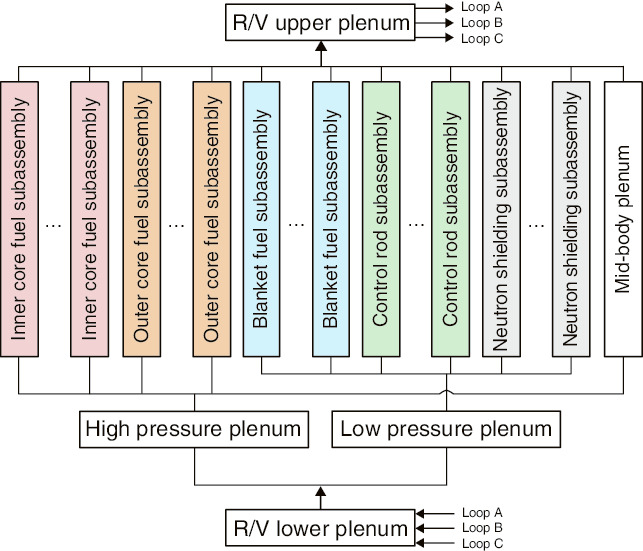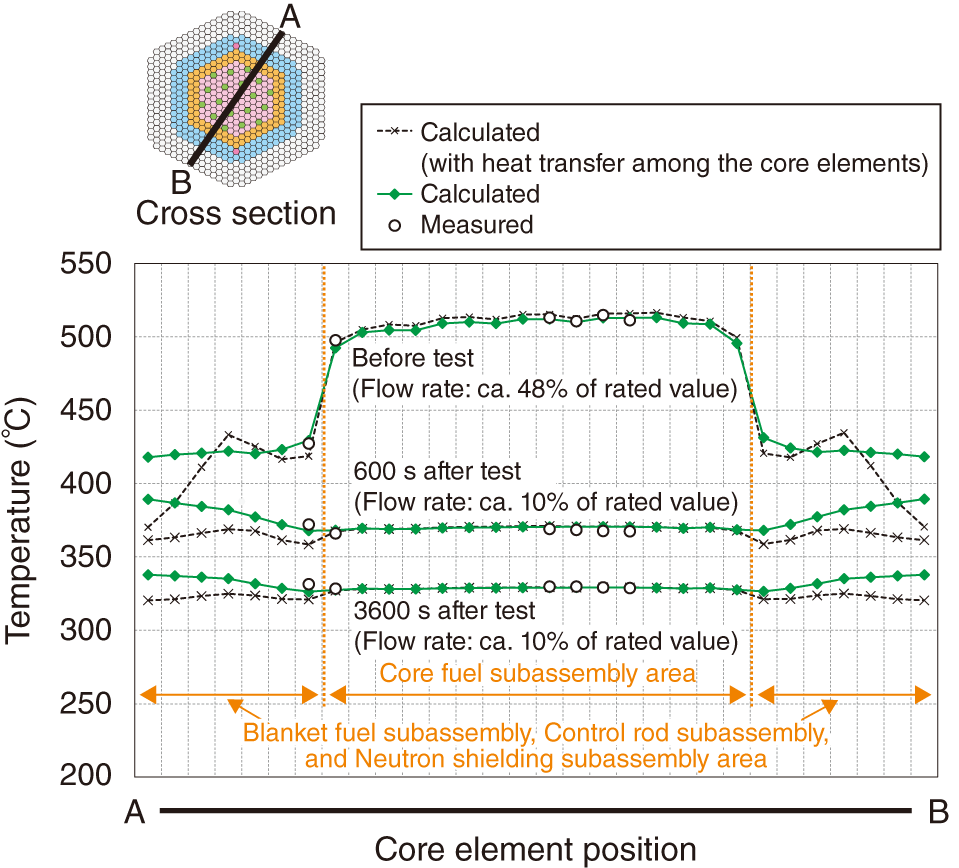
Fig.7-12 Whole core model

Fig.7-13 Comparison between the analytical result and the measured data
After the accident at the TEPCO’s Fukushima Daiichi NPS, new regulatory requirements considering severe accidents (SAs) were established. Therefore, strengthening plant against natural disasters and preparing safety measures against SAs such as long-term station blackouts (SBOs) are of critical importance. In the event of an SBO, the experimental fast reactor Joyo and the prototype fast-breeder reactor Monju employ decay-heat removal from the core into atmosphere through air coolers using natural circulation of sodium coolant, which requires no power supply.
This decay-heat removal by a fully natural circulation system is adopted in the design of the Japan Sodium-cooled Fast Reactor. As the driving force of coolant is the only buoyancy in natural circulation, the coolant-flow rate is very small. Therefore, two phenomena, namely radial-heat transfer and flow redistribution among core elements such core subassemblies, become dominant during natural circulation and dynamically change the temperature and flow rate into each core element.
Therefore, a whole-core model considering the heat-transfer effect among subassemblies and flow redistribution has been developed to predict their behavior for each core element (Fig.7-12). The two effects in this model were already validated by test results of natural circulation at the sodium test loop, PLANDTL, and the experimental fast reactor, Joyo. In this study, we comprehensively validated that the whole-core model could be applied for MONJU by comparing with the result of the plant-trip test at 40% power. An empirical formula based on the data obtained for a flow rate ranging from low to rated flow rate was applied to the pressure model of each core element.
The measured temperature distribution in the core-element outlet on the cross section at time periods of 600 s and 3600 s after the plant trip with a 10% flow rate differed from the distribution before the plant trip. The temperature of the innermost layer of the blanket fuel subassembly area with almost no heat is higher than that of the core fuel subassembly. The calculated temperature distributions of the core-element outlet agree well with those measured at each time (Fig.7-13). The temperatures of the blanket fuel subassembly, the control rod subassembly, and the neutron shielding subassembly area with almost no heat differ significantly from those without heat-transfer among subassemblies. We observed that heat transfer from core fuel assembles had significant effects to the temperature distribution and confirmed that the whole-core model can simulate heat transfer among core elements such as the core fuel subassembly; we also calculated the temperature distribution correctly in flow conditions of more than 10%.
Hence, this model can evaluate the plant behavior of a large reactor during natural circulation using an empirical formula based on the data for the low-flow-rate condition.